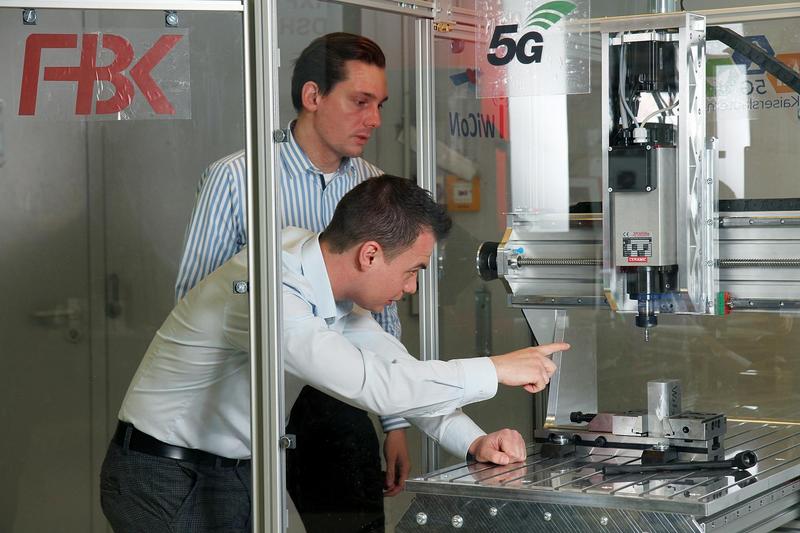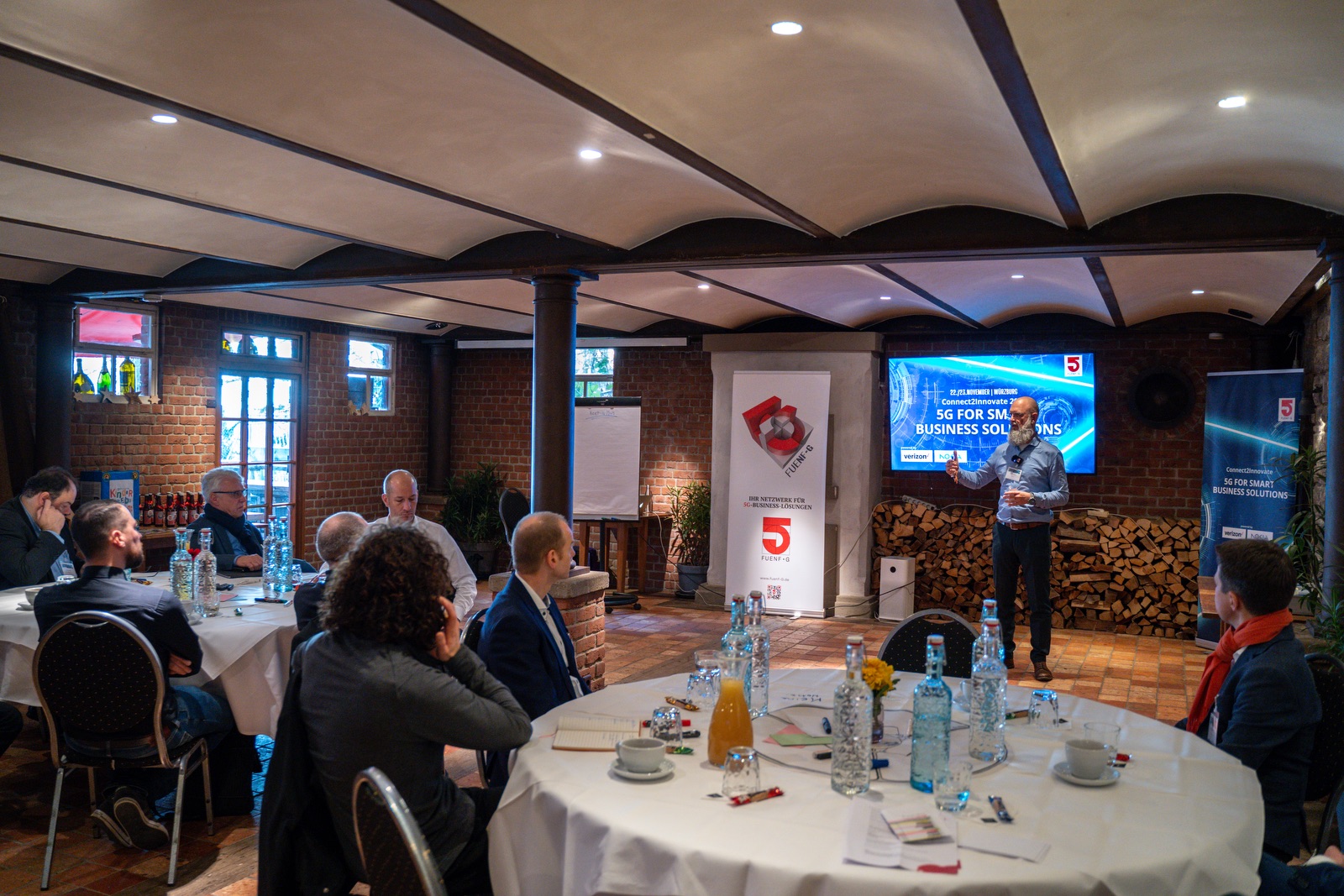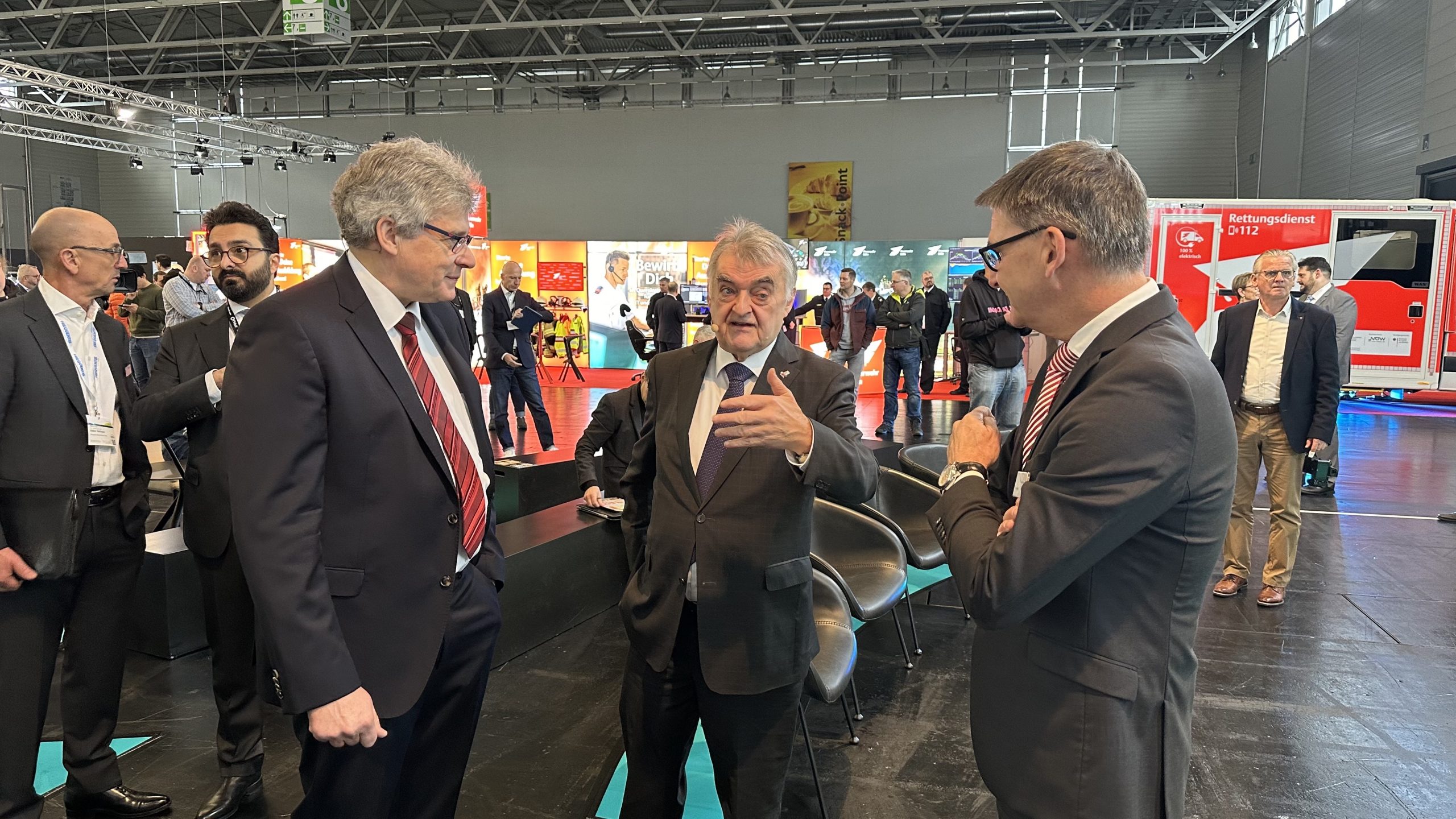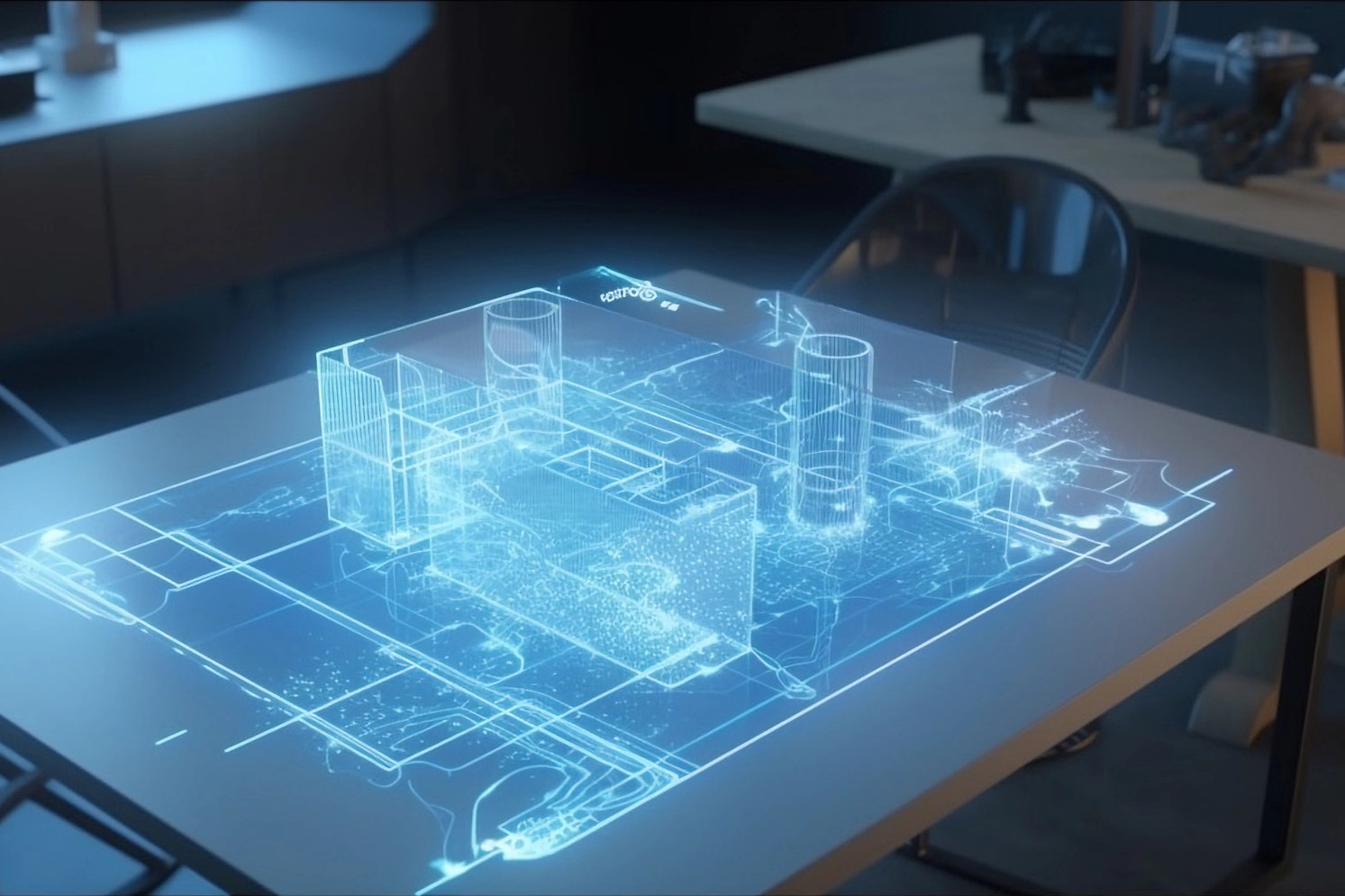Jan Mertes (in the front) and Peter Simon have developed a digital twin for this machine tool. The goal is to transmit machine data and control commands using 5G technology. (Image: TUK/Kozielld)
In a typical production facility, different machine tools are lined up in rows, but they are usually not networked with each other or with a control system. A team of researchers at the Technical University of Kaiserslautern (TUK) is working on changing this with the help of 5G and the digital twin. At Hannover Messe, the team will present its project at the research stand of the state of Rhineland-Palatinate (Hall 2, Stand B46) from May 30 to June 3.
In order to digitize industrial production, powerful communication technology is required. Above all, 5G technology is becoming the basis for wireless industrial networking, as data can be transmitted faster and more efficiently and machines can be networked better than with other wireless industrial communication technologies. At TU Kaiserslautern, the team from the Chair of Manufacturing Engineering and Plant Organization is working on bringing this technology into use. “As a rule, there is a computer or a corresponding control unit on every machine in a factory hall, which can be used to control the respective machine,” says Jan Mertes, a research assistant at the chair. “We want to centralize this control and outsource it to a high-performance computer, a so-called edge server.” This computer can be located anywhere on the factory premises.
PhD on 5G
To transmit the machine’s data quickly and smoothly, 5G technology is needed. “5G enables very low latencies, i.e., a very short delay time for communication, while at the same time providing high data rates and transmission and fail-safety,” says Mertes, who is currently investigating how 5G can best be used on a factory floor as part of his doctorate. “Among other things, we have to rule out interference from other machines and other factors here,” Mertes adds. “With 5G, a complete machine park could be controlled centrally. The individual software on site and the control hardware are eliminated.”
The team is simultaneously developing a 5G-enabled digital twin of the machine. “We have digitally replicated a machine tool, a milling machine, with which we are testing 5G technology,” he continues. “This can be used to control the real machine. The twin behaves just like the machine and does so in real time. In addition, there is a visualization of the machine that can be adapted to different conditions of use.” But the process can also be used to run through various simulations.
Central control of machine parks
The method is interesting for industry because a control of the machinery can be outsourced centrally to one place. “The worker can keep an eye on all the machines via a computer and theoretically does not have to be on site,” he cites as an advantage. In addition, the elimination of decentralized control units and central administration means that resources and space can be saved. In addition, with the process all data is located on one server. “This makes it easier to apply artificial intelligence processes, such as machine learning.”
The work is integrated into the “5G Kaiserslautern” project at TU Kaiserslautern. The team from the Chair of Production Engineering and Plant Organization led by Professor Dr. Jan C. Aurich is working closely with the team from the Chair of Radio Communication and Navigation led by Professor Dr. Hans Schotten, who is coordinating the project. It is funded by the German Federal Ministry of Transport and Digital Infrastructure.
At the fair, the team will present its machine tool in Hall 2, Booth B46. It is connected to the digital twin, which can be seen on a screen next to the milling machine at the research stand.
Parts of this text are translated with deepl.com.









Leave A Comment